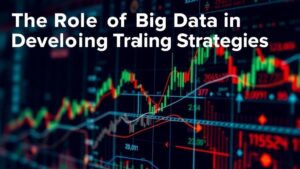Emphasizing the Role of Technology
As technology drives innovation in financial markets, understanding algorithmic trading is crucial for any forward-thinking investor.
Strategy Optimization vs. Curve Fitting: Striking the Right Balance
In the ever-evolving landscape of data science and analytics, two methodologies often emerge as critical players in decision-making processes: strategy optimization and curve fitting. Both techniques aim to enhance performance and derive insights from data, yet they approach the challenge from different angles. Understanding the nuances between these two methods is essential for professionals seeking to leverage data effectively. In this article, we’ll delve into the definitions, applications, advantages, and limitations of strategy optimization and curve fitting, as well as the importance of striking the right balance between them.
Strategy optimization refers to the process of refining a strategy to achieve the best possible outcomes based on a set of defined objectives and constraints. This is prevalent in various fields, including finance, marketing, and operations management.
Key Characteristics of Strategy Optimization
- **Objective-Driven**: The primary focus is on achieving specific goals, such as maximizing profits or minimizing costs.
- **Constraints Awareness**: Real-world limitations, such as budget, time, and resources, are factored into the optimization process.
- **Iterative Process**: Strategy optimization often involves multiple iterations and adjustments based on feedback and data analysis.
Real-World Applications
- Investment Portfolio Management**: Financial analysts optimize asset allocations to maximize returns while minimizing risk.
- Supply Chain Management**: Companies optimize inventory levels and distribution routes to reduce costs and enhance efficiency.
- Marketing Campaigns**: Marketers use optimization techniques to allocate budgets across channels for maximum return on investment.
Exploring Curve Fitting
Curve fitting is a statistical technique used to create a curve that best represents the relationship between variables in a dataset. This method is particularly useful when the relationship is not linear, allowing for more complex models to be developed.
Key Characteristics of Curve Fitting
- **Data-Centric**: Curve fitting relies heavily on the data at hand, rather than predefined objectives.
- **Model Selection**: Various mathematical models can be employed, such as polynomial, exponential, or logarithmic functions, to find the best fit.
- **Goodness of Fit**: The fitting process often assesses how well the model captures the data trends through metrics like R-squared values.
Real-World Applications
- Scientific Research**: Researchers fit curves to experimental data to validate hypotheses or predict future behaviors.
- Economics**: Economists use curve fitting to model demand and supply relationships based on historical data.
- Machine Learning**: In predictive analytics, models are built to fit data, enabling future predictions based on observed patterns.
Comparative Analysis: Strategy Optimization vs. Curve Fitting
While both strategy optimization and curve fitting aim to maximize effectiveness, they differ significantly in their approaches and applications. Below, we outline some of the primary distinctions.
Objective vs. Data Focus
- Strategy Optimization**: Centers on achieving specific goals (e.g., profit maximization) while considering constraints.
- Curve Fitting**: Focuses on accurately representing the data’s underlying trends without predefined goals.
Iterative Process vs. Model Selection
- Strategy Optimization**: Requires continuous refinement based on feedback and changing conditions.
- Curve Fitting**: Involves selecting the best-fitting model from a variety of mathematical functions.
Flexibility vs. Specificity
- Strategy Optimization**: Adapts to changes in goals or constraints, making it versatile in dynamic environments.
- Curve Fitting**: Often limited to the data available, which can lead to overfitting if not managed carefully.
The Importance of Striking a Balance
Balancing strategy optimization and curve fitting is crucial for effective data-driven decision-making. Here are some key reasons why:
1. Enhanced Decision-Making
- Employing both techniques allows organizations to make informed decisions based on solid data analysis and objective-driven strategies.
2. Improved Predictive Accuracy
- By using curve fitting to understand underlying data trends, organizations can better inform their optimization strategies, leading to more accurate predictions.
3. Mitigating Risks
- Over-reliance on curve fitting can lead to models that do not generalize well, while strategy optimization without robust data insights may overlook critical trends. A balanced approach helps mitigate these risks.
4. Adaptability in Dynamic Environments
- Organizations must remain flexible in the face of changing market conditions. By integrating both methodologies, they can quickly adapt their strategies while having a solid foundation of data to support decisions.
Practical Steps for Achieving Balance
To effectively strike a balance between strategy optimization and curve fitting, consider the following practical steps:
1. Define Clear Objectives
- Clearly articulate the goals of your analysis. This will guide both the optimization and fitting processes.
2. Collect Comprehensive Data
- Ensure you have high-quality and relevant data. This is vital for successful curve fitting, which in turn informs better strategy optimization.
3. Choose Appropriate Models
- Select the right fitting models that reflect the complexity of your data without becoming overly complex or leading to overfitting.
4. Implement Iterative Processes
- Utilize an iterative approach for both strategy optimization and curve fitting, allowing for continuous refinement based on new data and feedback.
5. Collaborate Across Teams
- Encourage collaboration between data scientists, analysts, and business strategists to ensure a holistic approach to decision-making.
Conclusion
In the realm of data analytics, strategy optimization and curve fitting serve as powerful tools that, when used in tandem, can significantly enhance decision-making and predictive accuracy. Understanding the distinctions between these two methodologies allows professionals to leverage their strengths while mitigating their limitations. By striking the right balance, organizations can not only improve their operational effectiveness but also adapt to the ever-changing landscape of business challenges. In a world increasingly driven by data, mastering the interplay between strategy optimization and curve fitting is not just advantageous—it’s essential for sustained success.



